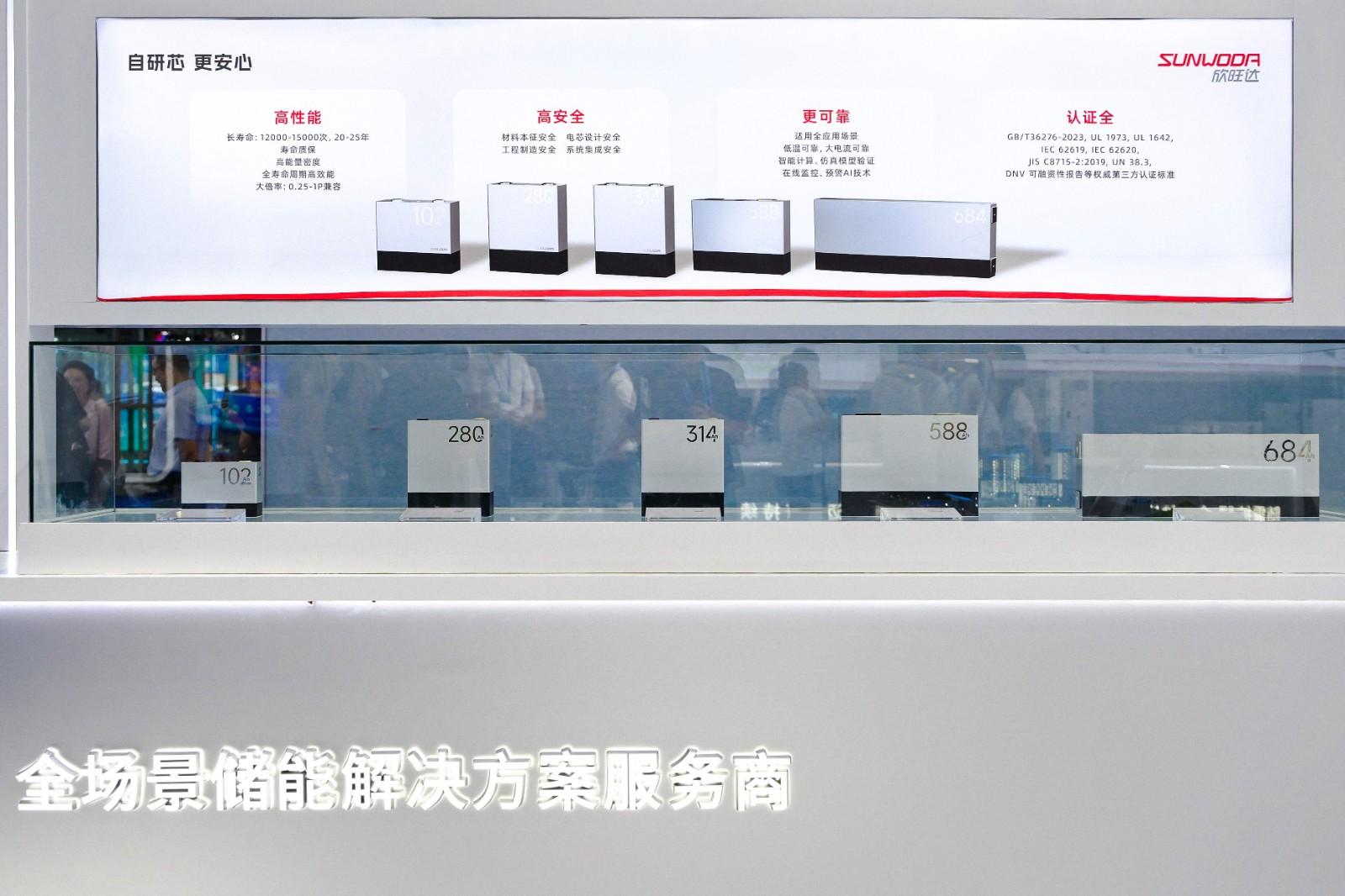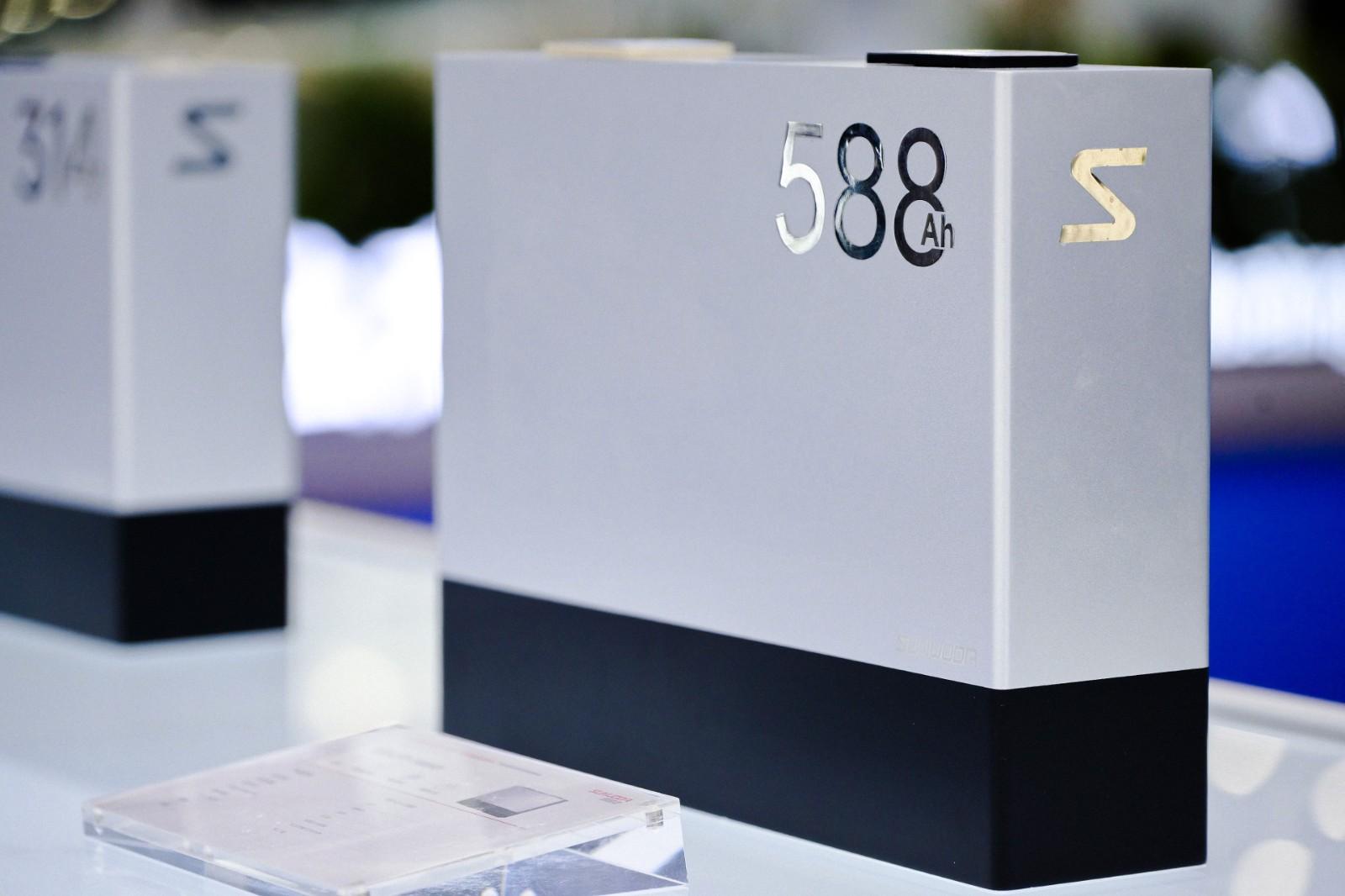
As the global energy transition gains momentum, energy storage is evolving from a supporting player to a central pillar for integrating renewable energy into the grid. According to insights from BloombergNEF and the International Energy Agency (IEA), worldwide capacity for new energy storage installations is projected to grow at a compound annual rate of 30%-40% through 2030. Against this backdrop, energy storage cells that offer high capacity, enhanced safety, and extended longevity have become crucial for driving down the levelized cost of energy and boosting system integration efficiency.
At the pivotal 2025 International Digital Energy Expo in Shenzhen, which commenced on September 18, Sunwoda took the opportunity to launch its latest 684Ah and 588Ah energy storage cells. These new products are designed to tackle core industry challenges, providing robust solutions to propel the sector forward.
The 684Ah cell utilizes advanced stacking technology, achieving an impressive volumetric energy density of over 440 Wh/L—positioning it among the top performers in its category. It features a "thermal-electric separation" design and a 3D cooling structure that optimizes thermal management, significantly boosting both safety and long-term reliability. Engineered for a service life exceeding 20 years, the cell meets the demand for extended operational duration. Its compatibility with various container solutions (10-foot, 20-foot, 30-foot), combined with its high energy density, simplifies deployment and can reduce lifetime electricity costs by approximately 8% compared to conventional alternatives.

The 588Ah cell employs mature winding processes and low-lithium-loss technology to effectively minimize capacity degradation over time. It delivers up to 10,000 cycles while maintaining 70% state of health, ensuring reliable performance for over 20 years. With an energy efficiency of 96.5%, the use of enhanced safety electrolytes, and directed venting channels, it offers optimized cost-effectiveness for demanding applications.

"The launch of our 684Ah and 588Ah cells underscores our commitment to innovation and large-capacity storage technology," stated Chen Tao, General Manager of Sunwoda's Energy Storage Business Unit. "Our focus remains on delivering safe, high-quality solutions tailored to diverse scenarios."
Sunwoda's product portfolio now spans multiple technical routes and capacities. While the 684Ah and 588Ah cells utilize different core processes (stacking versus winding), both place a strong emphasis on longevity, efficiency, and economy, catering to a wide spectrum of storage requirements. Moving forward, Sunwoda will continue to strengthen its innovation and manufacturing capabilities, delivering products with higher density, longer life, and greater value to support global sustainability efforts.
These technological breakthroughs are supported by Sunwoda's nearly three decades of experience in lithium battery development. The company has expanded beyond its traditional manufacturing roots to offer integrated green energy solutions, encompassing consumer batteries, electric vehicle power systems, and energy storage. At the expo, Sunwoda also showcased its battery passport system and recycling initiatives, further solidifying its comprehensive digital energy ecosystem.
The battery passport acts as a digital identity for each battery, mandated to include eight categories of sustainability data for market access into the EU. Leveraging a full-lifecycle data platform, Sunwoda uses AI to reduce manual review processes by 90%, integrates 22 international standards, cuts certification time by 88%, and ensures data security through encryption and blockchain technology.
Battery recycling forms a key part of Sunwoda's circular economy strategy. With major hubs in Shenzhen and global bases, the company focuses on efficient recycling processes (for both NMC and LFP systems) and exploring second-life applications, thereby streamlining the entire chain from collection to reuse.
Next:None
Previous:A Battery Configuration Guide For Your Home Energy Storage System